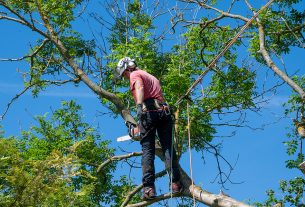Agriculture has always been a cornerstone of human civilisation, evolving through the ages from rudimentary farming to the technologically advanced practices we see today. One aspect of this evolution, particularly in the realm of livestock farming, is the development and use of modern cattle yards. These structures are not just about containment; they represent a leap in animal welfare, efficiency, and farm management.
Understanding Modern Cattle Yard Designs
The design of cattle yards has undergone significant changes over the years. Today, they are more than just fenced areas for cattle. Modern designs incorporate elements that prioritise animal welfare, worker safety, and operational efficiency. These include walkways, holding pens, drafting facilities, and loading ramps. The focus is on reducing stress for both the animals and the workers, thereby improving overall productivity.
Innovative Materials and Construction
Innovative materials play a crucial role in the construction of cattle yards. Durability and safety are paramount, as the structures must withstand harsh weather and the wear and tear of daily farm activities. Materials like galvanised steel and robust timber are commonly used, providing the necessary strength and longevity. The choice of materials also impacts the ease of maintenance, which is crucial for busy farmers.
Animal Welfare and Ethical Considerations
Animal welfare is at the forefront of modern cattle yard design. Ethical considerations dictate the need for ample space, proper ventilation, and facilities that minimise stress and injury to the animals. This humane approach not only aligns with ethical farming practices but also contributes to better meat and dairy quality, benefiting both farmers and consumers.
Technology Integration in Cattle Yards
Technology has found its way into cattle yard management. Automated gates, surveillance systems, and electronic tagging for livestock monitoring are becoming increasingly common. These technological advancements aid in efficient herd management, health monitoring, and ensuring security within the yards. Farmers can now monitor and manage their herds with greater ease and precision.
Environmental Impact and Sustainability
The design and operation of cattle yards also consider environmental sustainability. This includes waste management systems, water conservation practices, and methods to reduce the carbon footprint of livestock farming. Sustainable practices not only benefit the environment but also enhance the farm’s reputation and can lead to cost savings in the long run.
Education and Training for Farmers
To fully leverage the benefits of modern cattle yards, farmers need education and training. This includes understanding animal behaviour, learning how to use new technologies, and staying abreast of best practices in livestock management. Access to resources and training programs is essential for farmers to adapt and thrive in the evolving agricultural landscape. A valuable resource for farmers is the latest farming techniques, which provide insights into innovative practices and technologies in agriculture.
In conclusion, modern cattle yards are a testament to the ongoing evolution in agriculture. They reflect a commitment to animal welfare, operational efficiency, and sustainability. As farming practices continue to evolve, so too will the design and functionality of cattle yards, ensuring they remain a vital component in the agricultural landscape of the future.




